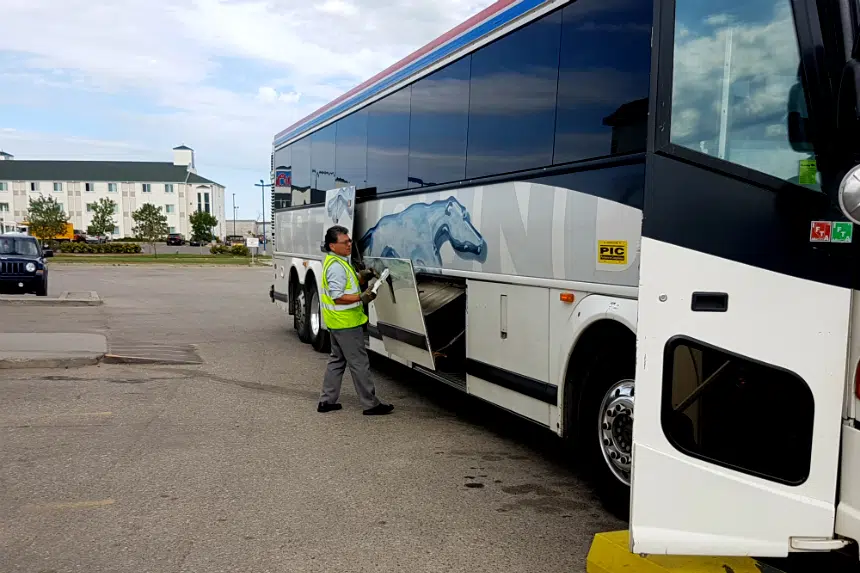As news of Greyhound Canada’s departure from Canadian markets spread Monday, those who depend on the service were shocked to hear that travelling by bus may soon be a thing of the past.
Greyhound Canada announced plans to withdraw from every route west of Ontario by Oct. 31, with the exception of a popular route between Vancouver and Seattle.
Greyhound cited a 41 per cent decline in ridership since 2010 in coming to the decision.
That decline was noticeable as 16 people boarded the 4:30 p.m. bus leaving from Saskatoon to Edmonton on Monday. Nearly all of them were left scratching their heads to figure out alternative plans for the future.
Joseph Dutton was headed back to Edmonton after visiting his grandparents in Saskatoon.
“(Greyhound) is the only way I can actually get out here with my family all split out up now,” he said of his regular trips on Highway 16.
He said the company’s withdrawal likely meant he’d get less quality time with his family.
“Greyhound was effective and the service was really nice. Now everything else is going to cost a lot more, so I’m not going to be able to come out here and see my grandparents as often.”
Dutton said being able to open up a book while taking in the countryside were his favourite parts of riding by bus.
Amelia Gaunt said that’s also what keeps her coming back to Canada.
The Australian tourist said she visits every two years and has always favoured Greyhound buses over flying across the Prairies on the journey to Vancouver.
“That’s shocking,” she said of the news. “It’s actually really fun going through the small towns.”
A large amount of riders from remote areas of Saskatchewan will also be stranded. With the province’s shutdown of the Saskatchewan Transportation Company (STC) in 2017, Greyhound was one of the last remaining bus services outside of public charters.
A statement issued by the provincial government maintained hope that other private companies would step into the breach once Greyhound leaves.
“The Government is optimistic that other private sector companies will be able to begin providing transportation services or expand their current service offerings to impacted communities where the demand exists along the Trans-Canada and Yellowhead Highways.”
The emailed statement also nixed any suggestion the province might re-visit the decision to scrap STC in light of Greyhound’s impending departure from the market.
“The publicly subsidized operation of bus services remains unfeasible and would require massive taxpayer subsidies of over $80-million over the next five years. As such, the decision to wind-down operations at the STC will not be revisited.”
Peter Hamel, regional vice-president for Greyhound in Western Canada said the implications of losing such a far-reaching bus service will be felt far and wide.
“The passengers in and around Saskatchewan, this is going to be an impact of around 70,000 passengers,” he said of the province’s annual riders.
“There certainly is a shock right now, but this is something that Greyhound has been communicating for the last year, for the last five years, that we can no longer sustain any type of viable business within the province, within these regions.”







